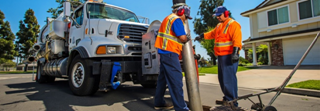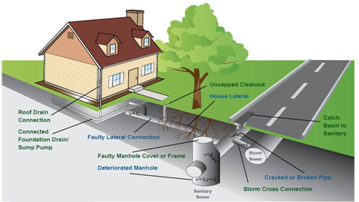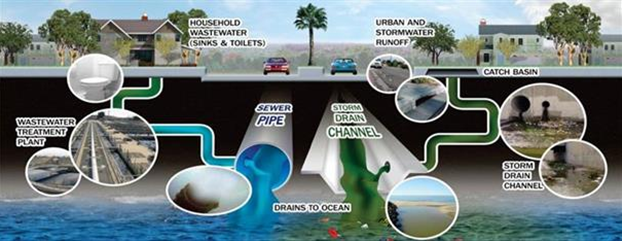HISTORY OF THE CITY OF SANTA ANA
The Santa Ana area was explored in 1769 by a Spanish expedition led by Gaspár de Portolá. The first people who came to the area named the newly founded settlement Rancho Santiago de Santa Ana in honor of Saint Anne.
It quickly became apparent that the ground was fertile for crops and cattle grazing. The city grew to become a farming community that fed the area. Many of the original settlers used the area for crops while a small portion raised cattle.
As more people came to the area in the early 1860s, it was determined that there would need to be a plan for the city’s layout. The community was officially laid out in 1869, and the plans for the city’s development went into effect.
Following the implementation of the plan, the city was renamed, Santa Ana. With major growth in new arrivals to the area, local industries continued to grow as well. Santa Ana was chosen to be the seat of Orange County.
Santa Ana quickly became a center for commercial, financial, and manufacturing businesses that today produce numerous electronic parts, sporting goods, and aerospace equipment. The city has become a major hub for much of the economic activity in southern California.
WHERE DOES SANTA ANA CITY WATER COME FROM?
SANTA ANA’S water supply is a blend of local native surface water and imported Metropolitan Water District (MWD) water impounded within Santiago Reservoir. Additionally, groundwater is pumped from the local aquifer managed by OCWD that stretches from the Prado Dam and fans across the northwestern portion of Orange County, excluding the communities of Brea and La Habra, and stretching as far south as El Toro.
ARE THERE CONTAMINANTS IN SANTA ANA’S CITY WATER?
The sources of drinking water for Santa Ana’sresidents (both tap water and bottled water) include rivers, lakes, streams, ponds, reservoirs, springs and wells. As water travels over the
the surface of the land or through the layers of the ground it dissolves naturally-occurring minerals and, in some cases, radioactive material, and can pick up substances resulting from the presence of animal and human activity.
Contaminants that may be present in source water include:
Pesticides and herbicides, which may come from a variety of sources such as agriculture, urban stormwater runoff, and residential uses.
Microbial contaminants, such as viruses and bacteria, which may come from sewage treatment
plants, septic systems, agricultural livestock operations, and wildlife.
Radioactive contaminants, which can be naturally occurring or be the result of oil and gas production or mining activities.
Inorganic contaminants, such as salts and metals, which can be naturally occurring or result from urban storm runoff, industrial or domestic wastewater discharges, oil and gas production, mining and farming.
Organic chemical contaminants, including synthetic and volatile organic chemicals, which are by-products of industrial processes and petroleum production, and can also come from gasoline stations, urban stormwater runoff, agricultural application, and septic systems
SHOULD I DRINK AND BATHE WITH SANTA ANA’S CITY WATER STRAIGHT FROM MY FAUCET?
Some people may be more vulnerable to contaminants in drinking water than the general population. Immuno-compromised people, such as those with cancer who are undergoing chemotherapy, persons who have had organ transplants, people with HIV/AIDS or other immune system disorders, some elderly persons and infants can be particularly at risk from infections. These people should seek advice about drinking water from their health care providers.
The USEPA and the federal Centers for Disease Control guidelines on appropriate means to lessen the risk of infection by Cryptosporidium and other microbial contaminants are available from USEPA’s Safe Drinking Water Hotline at (800) 426-4791 between 10 a.m. and 4 p.m. Eastern Time (7 a.m. to 1 p.m. in California)- source: 2017Anaheim Water consumer confidence report.
http://santaanaccr.org/PDF/2017_Water_Quality_Table_Web.pdf
Complete Plumbing recommends installing a Catalytic Carbon Whole house water filtration system by Aqualistic Water Products to remove most of the harmful chemicals in your city water, leaving you with bottled quality water at every faucet in your home.
SANTA ANA PLUMBING TIPS
Fix leaky faucets. For every leak stopped, you can save 20 gallons of water per day.
Develop a watering schedule for your irrigation system. To learn more, visit www.bewaterwise.com/calculator.html.
Use native plants in your landscaping. Planting and maintaining beautiful California native and water-friendly plants can save between 1,000 and 1,800 gallons per month.
Install a high efficiency toilet or clothes washer. A temporary rebate program is still available. Other rebates are also available for sprinklers and artificial turf. To learn more, visitwww.ocwatersmart.com.
MWDSC has its own water conservation website. To find out more information on water-saving plants and other useful tips, visit www.bewaterwise.com.source: 2017
SANTA ANA RESIDENTS should make sure that their plumbing systems are in good working order and are leak-free. This is important, not only for saving money on you water bill and limiting damages to property, but it is our responsibility to provide clean freshwater for future generations.
DID YOU KNOW?
Water Leaks:
- Nationwide, more than 1 trillion gallons of water are lost annually due to household leaks. That’s equal to the annual water use of more than 11 million homes.
- The average household can waste more than 10,000 gallons each year due to correctable leaks. That’s enough to wash 270 loads of laundry!
- Ten percent of homes have leaks that waste 90 gallons or more per day! Common sources include toilets, faucets, showerheads, and landscape irrigation. But you should also consider less obvious sources of leaks: water heaters, ice makers, dishwashers, and filtration systems. Many of these are easily correctable, and fixing them can save about 10 percent on the average water bill.
- Be sure to check your toilet for leaks at least once a year. Put food coloring in the tank. If it seeps into the bowl without flushing, there’s a leak. And if your toilet flapper doesn’t close properly after flushing, replace it.
- Remember, one drip a second adds up to five gallons lost per day!
So regularly check your faucets and showerheads, as well as all hoses and connectors. - Many household leaks can be solved with simple tools and a little education — and fortunately, Do-It-Yourselfers have access to multiple resources. But even if you must pay for repairs, you will still save money in the long run. For more information on water conservation, visit ocwatersmart.com.
- Complete plumbing provides leak detection of even the smallest amount of water which could prevent costly water bills and possible damage due to water leaks
- Complete plumbing utilizes automatic water shut off valves that detect leaks, automatically shuts off the water to your home then sends you an alert via a smartphone app. You can turn the water on and off, monitor water usage and temperature right from your phone!
SANTA ANA CITY SEWER DRAINAGE SYSTEM
Your sewage system is connected to the City sewer main through a sewer lateral. As an owner, you are responsible for maintaining the lateral from the property all the way to the connection with the sewer main.
In the event of a blockage in your sewer line, immediately stop using water and call a licensed plumber. Never let sewage overflow into the street or storm drain.
Usually, after clearing the lateral, a licensed plumber will assess the condition of the pipe by televising it. If the pipe has a break or a crack, you are required to repair the portion of the pipe that lies between the house and the property line.
If the plumber finds a break-in or collapse of the lateral beyond the property line, or if you need assistance to contain a spill, call Public Works for help at (714) 647-3380.

- Most Santa Anahomes have just one main sewer pipe that connects the sewer system from their house to the city’s main sewer system. Homeowners are required to maintain that sewer pipe up to and including the middle of the street and may be responsible for repair costs should a problem occur.
- Complete Plumbing can use a sewer drain camera and location device to inspect sewer lines for breaks, cracks root intrusions. This simple examination of your sewer system may save thousands of dollars in repair costs.

The leading causes of stoppages are tree roots and cooking grease. Maintaining your home’s plumbing system clean and open can save you a great deal of money and eliminate the aggravation of a sewage backup. Here are a few simple tips:
- Never pour cooking grease down the drain. Freeze it in a suitable non-recyclable container and dispose of it in the trash.
- If any cooking oil or grease gets in your drain, immediately flush the drain with cold water, not hot. For more information about Fats, Oil, and Grease (FOG), click here.
- Never flush non-soluble objects down your toilet. This includes food, tampons, sanitary napkins, cleaning rags, diaper wipes, etc.
- Don’t plant trees and large shrubs near sewer lines. Roots grow toward sewer line cracks in search of water, often forming root balls that clog the line.
- If you are having problems with tree roots breaking into your sewer lateral, many plumbing and drainage companies can use ‘root saws,’ high-pressure jet wasting equipment, and special chemicals call “rodenticides” to clear the blockage. Keep in mind, the City will not clear blockages caused by private trees or other debris in private sewer laterals.
- If you have a property cleanout, flush your lateral through the cleanout using a high-pressure hose at least once a year.
- Be sure to use a licensed plumber when having your sewer lateral televised or repaired.
 Stormwater is water from rain that does not soak into the ground. It flows over paved areas like streets, sidewalks, and parking lots, as well as roofs and sloped lawns. As it flows, the stormwater collects and carries pollutants such as litter, pet waste, pesticides, fertilizers, and motor oil. This “toxic soup” then flows through a massive system of pipes and channels directly into our local waterways and the ocean.What is the difference between the storm drain system and the sanitary sewer system?The storm drain system and sanitary sewer system are both large conveyance systems of underground pipes. This leads to the misconception that the systems are the same. They are in fact separated and serve different purposes.The sanitary sewer system transports domestic sewage to a treatment plant. Domestic sewage includes wastewater from household and commercial plumbing, such as toilets, showers, and sinks. There, contaminants are removed from the sewage through a multi-stage process, which includes settling, filtering, and biological and chemical treatment. The treated water is then discharged into local waterways or used as reclaimed water.
Stormwater is water from rain that does not soak into the ground. It flows over paved areas like streets, sidewalks, and parking lots, as well as roofs and sloped lawns. As it flows, the stormwater collects and carries pollutants such as litter, pet waste, pesticides, fertilizers, and motor oil. This “toxic soup” then flows through a massive system of pipes and channels directly into our local waterways and the ocean.What is the difference between the storm drain system and the sanitary sewer system?The storm drain system and sanitary sewer system are both large conveyance systems of underground pipes. This leads to the misconception that the systems are the same. They are in fact separated and serve different purposes.The sanitary sewer system transports domestic sewage to a treatment plant. Domestic sewage includes wastewater from household and commercial plumbing, such as toilets, showers, and sinks. There, contaminants are removed from the sewage through a multi-stage process, which includes settling, filtering, and biological and chemical treatment. The treated water is then discharged into local waterways or used as reclaimed water.
The storm drain system, on the other hand, was designed to prevent cities from flooding. Its purpose is to quickly transport rain runoff (stormwater) away from the city and into the nearest waterway, without treatment. And so, any pollution carried by stormwater also enters our waterways untreated.

We have been serving Santa Ana Residents for over 30 years and know a lot about Santa Ana’s water filtration systems, Santa Ana’s Plumbing Systems, Santa Ana’s heating, and air conditioning systems, Santa Ana’s tankless water heaters Santa Ana’s drain cleaning
Call and ask about our Santa Ana residents’ specials.
